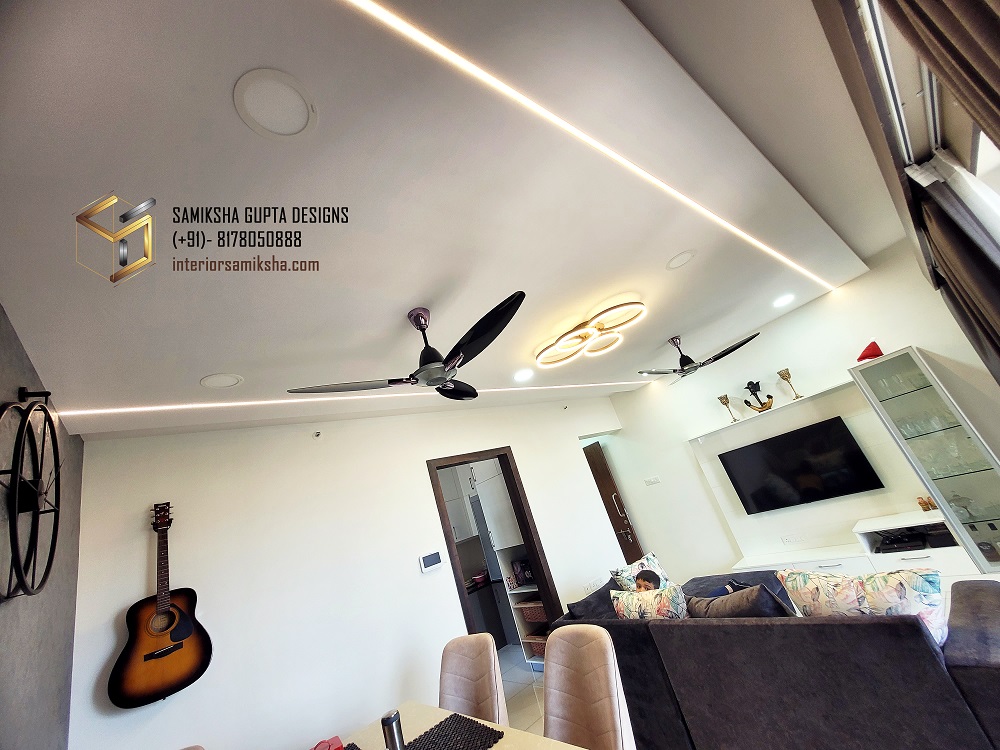Proper lighting can not only accentuate the space; it also gives comfort to the eyes. Different areas should have a different kinds of lighting. By different “kind”, I don’t only mean the shape and size of the light fixture, I also mean different temperatures.
Let’s understand what I mean by “light temperature” in detail.
Some spaces must have high-intensity light, while some not so much. Some areas may require warmer lighting; while some may require cooler.
Importance of Different Types of Lighting
While most working areas (study spaces, kitchen etc.) need cool lighting, it’s always best to have a little warmth in the rest of the house. It makes the house feel homelier and cosy.
It’s always a great idea to understand what type of lighting you should install in different areas of the house.
If you like to have a cosier environment, you should go for more warm lights. Warm lights are recommended for areas where you want to sit and relax or have a nice family time.
If you are struggling to achieve warmth in your house, keep on reading! In this article, I have focused more on how you can add more warmth to your house.
It’s recommended to have a professional by your side while designing the lighting of your house. It can be tricky and may cost you a lot more if you end up making the wrong choices.
An interior designer is the best person who can guide you through this. They would not only suggest the light temperatures in different spaces, but they will also help you in selecting the right type of light fixture. They will help you create a proper theme for the house, with the right lamp complementing the overall furniture of the room.
Fundamentals of Home Lighting
Here are some fundamentals of home lighting that can add warmth to your house and make it more welcoming:
-
Layer the Lighting

What I mean by this is that you need to properly set a combination of ambient, task and accent lighting in your space.
- Ambient lighting is the general illumination (usually the ceiling panel lights).
- Task lighting helps you perform specific tasks (e.g. spotlights or lamps for study/reading).
- Accent lighting adds a visual appeal to the room. These are usually the pendant lights or lamps that you can add to your bedroom or living room.
-
Use Warm Lights
Light bulbs come in different colour temperatures. The unit to measure that temperature is Kelvin (K). The warm light bulbs have a Kelvin temperature between 2700K and 3000K. This low temperature makes the light appear yellowish or warm white. These help in creating an inviting and cosy atmosphere.
-
Dim the Lights
Dimming the lights can create a relaxed atmosphere, especially in the evening time. Dim lights give a very cosy feeling when you’re among your loved ones and watching a movie.
You can install dimmer switches or use lamps that come with built-in dimming features.
-
Add Lamps in the Interiors
Floor lamps, table lamps, or even string lights can add cosiness and warmth to the space. You can create pools of light in specific areas of your room.
Lamps are no longer just show pieces in the rooms. They also add a lot of ambience to the space.
-
Use Accent Lights to Highlight
Highlight the special interior features, with accent lightings like a fireplace, a bookshelf or a piece of artwork. This gives dimension and depth to the room and creates an easeful atmosphere.
I have been using profile lights in interiors for years for wonderful highlighting effects. Yet, it’s still a new concept for many people who are not exactly in touch with the latest trends in interiors.
I have written an in-depth blog about what profile lights are and how to go about using them in your interiors.
Do take out 5 minutes of your time and give it a read.
Here’s a picture of the living room’s false ceiling that I designed a year back. The client was insistent on the use of a profile light in the space. And look how wonderfully it turned out!

It’s a perfect combination of warm light and cool light on one ceiling. The panel lights are all cool (as per the client’s requirement) and the decorative chandelier in the middle is obviously warm. I usually keep the cove light (indirect lighting) warm for a dramatic effect.
-
Select the Right Lampshades
The kind of lampshade that you select has a great impact on the quality of the light in the room.
Lighter-coloured lampshades allow more light to pass through.
Dark-coloured shades create a more intimate and subdued atmosphere.
Importance of False Ceiling for Lighting
I meet a lot of people who want to avoid the cost of the false ceiling but want good lighting in their houses. That becomes tricky.
Now the idea for a properly distributed light is to have these lights installed at the right and at equal distances in the room. Just two light points (generally the default provision) are usually not enough in a standard room size. You’ve got to take the connection from the primary points and create new light points in the ceiling. This can be done during wiring work.
But only a false ceiling drop can conceal all these messy wirings. However, if you already have low height in your space, you can go with industrial-style interiors, paint the ceiling in some darker paint shade and hide the wires in exposed pipes.
But that doesn’t work all the time. Especially in residential projects.
Another option is to have tube lights or wall lights installed if you cannot take a false drop in the ceiling. However, that also doesn’t guarantee uniformly distributed light in the room.
Always hire a design specialist or a lighting expert if you’re feeling stuck and want a technically sound solution. It will always be cost-effective for you in the long run and you’ll be able to achieve the desired result.
I hope this post helped and by using these suggestions, you can create a warm and welcoming atmosphere in your home. If you do apply any of these, do share pics with me! I would love to know about your experience.





